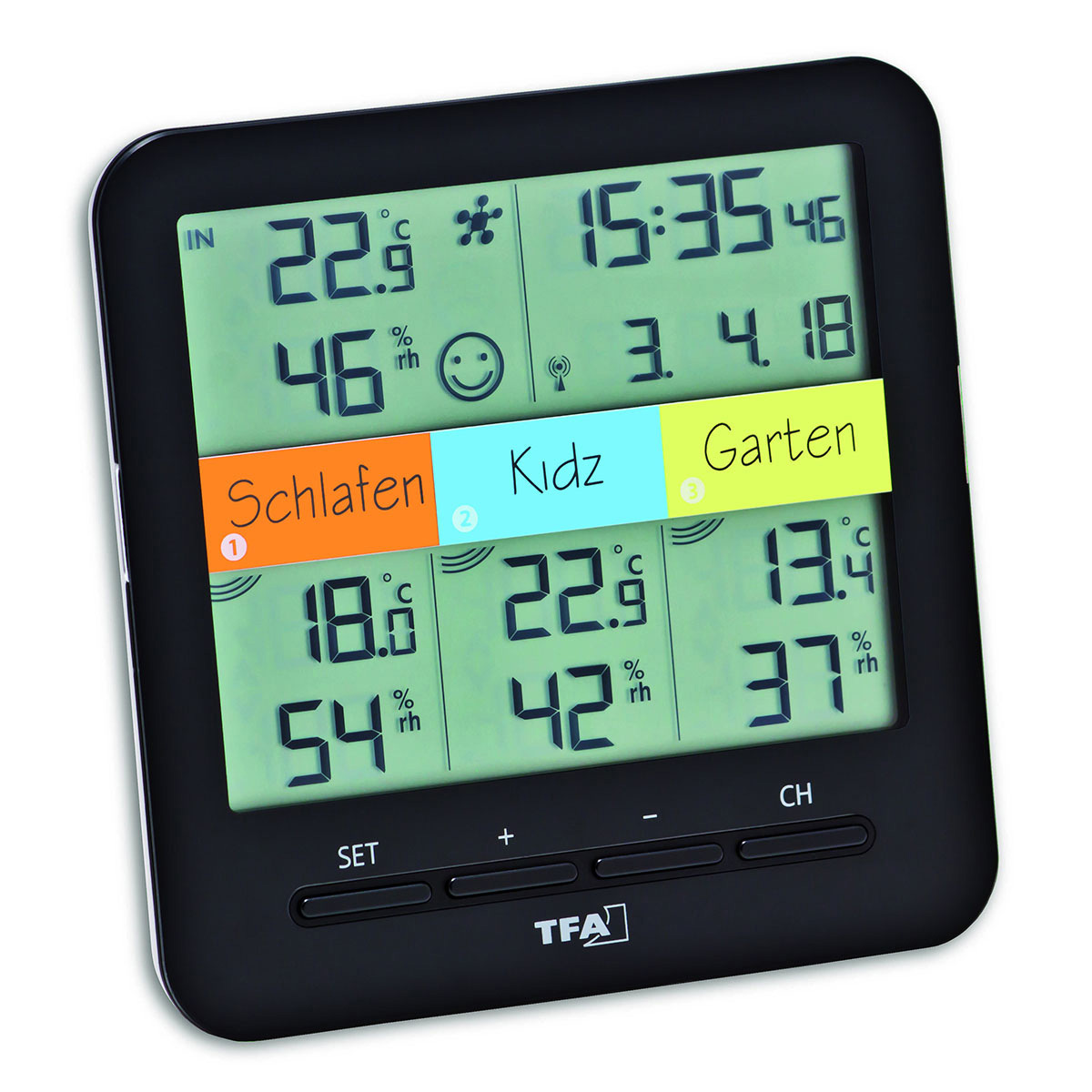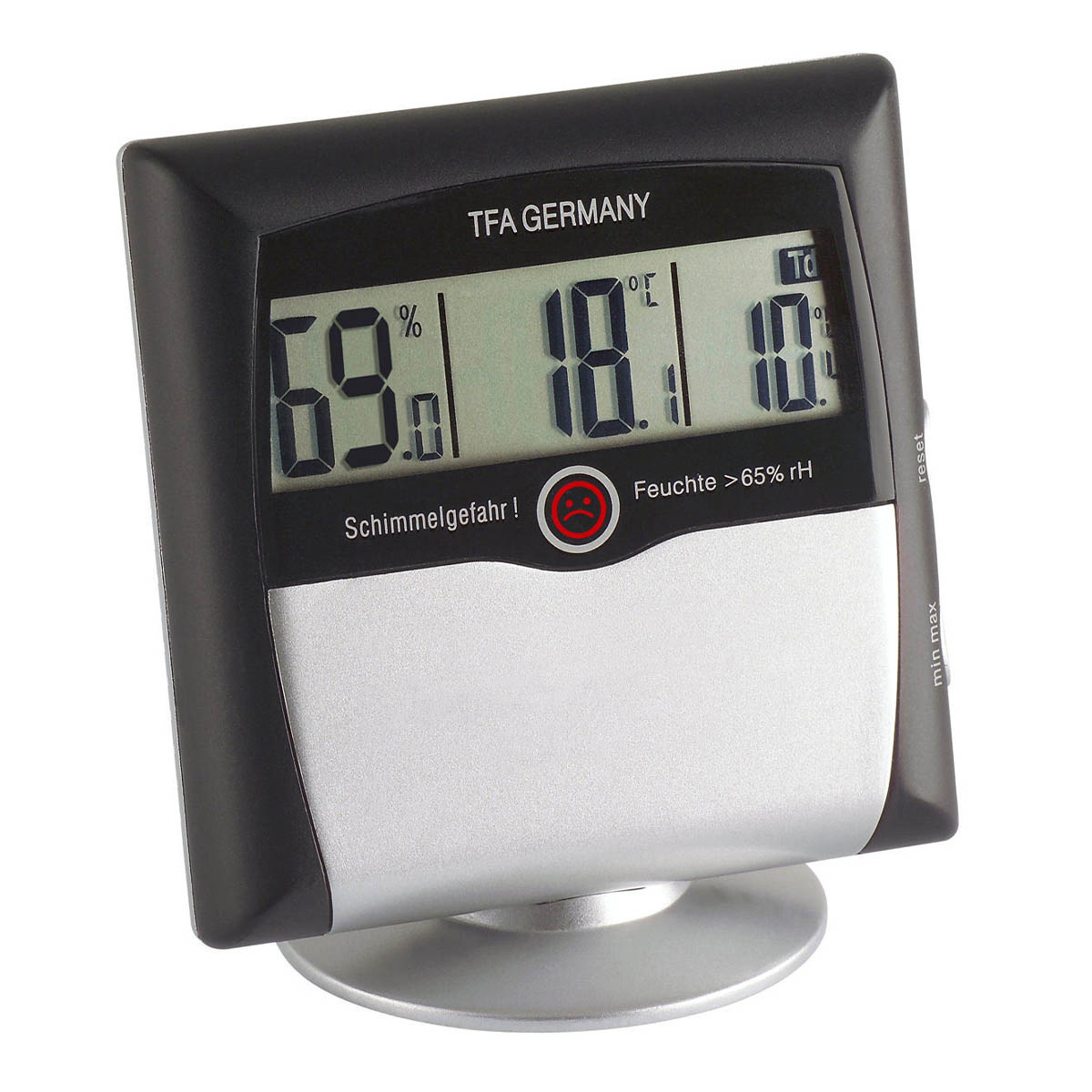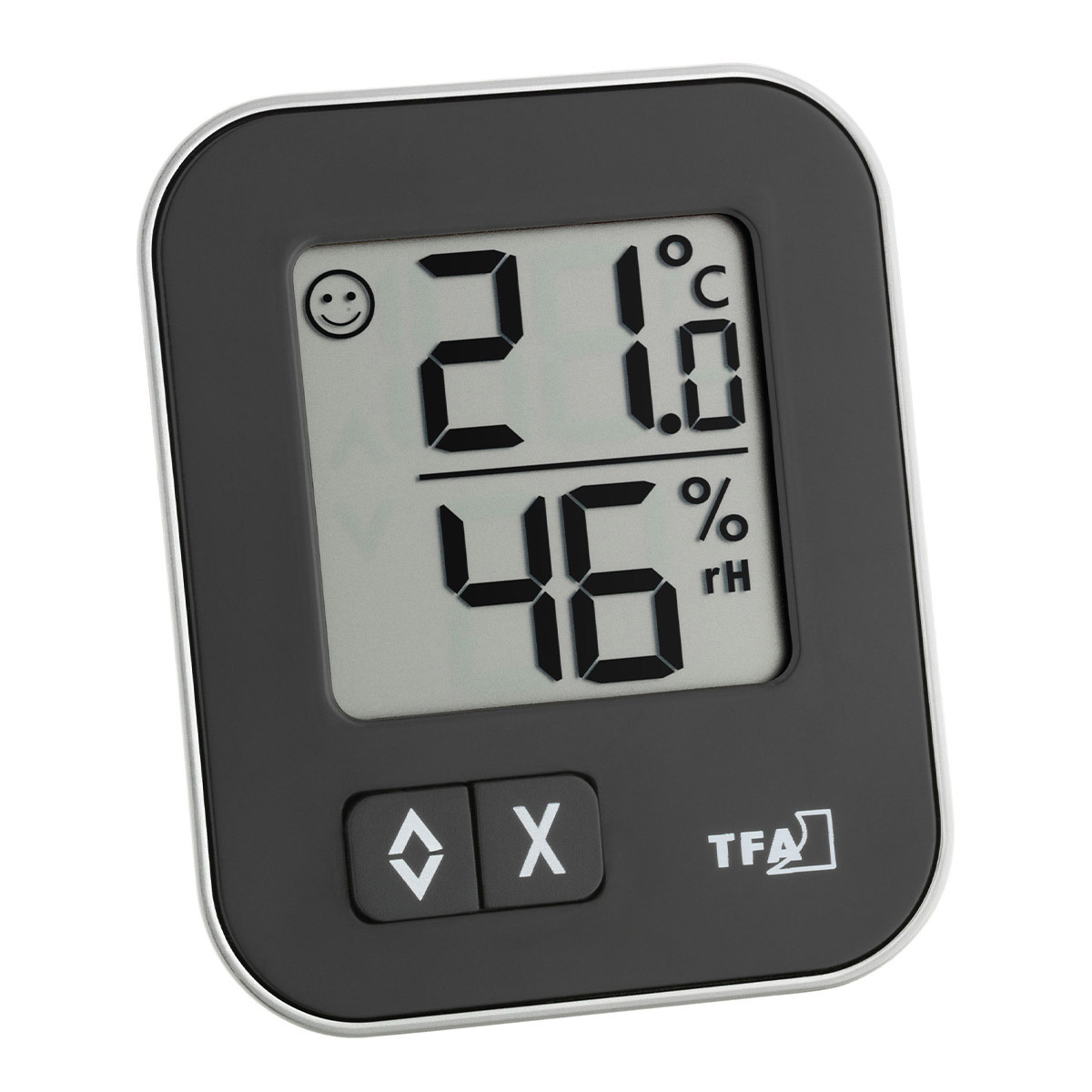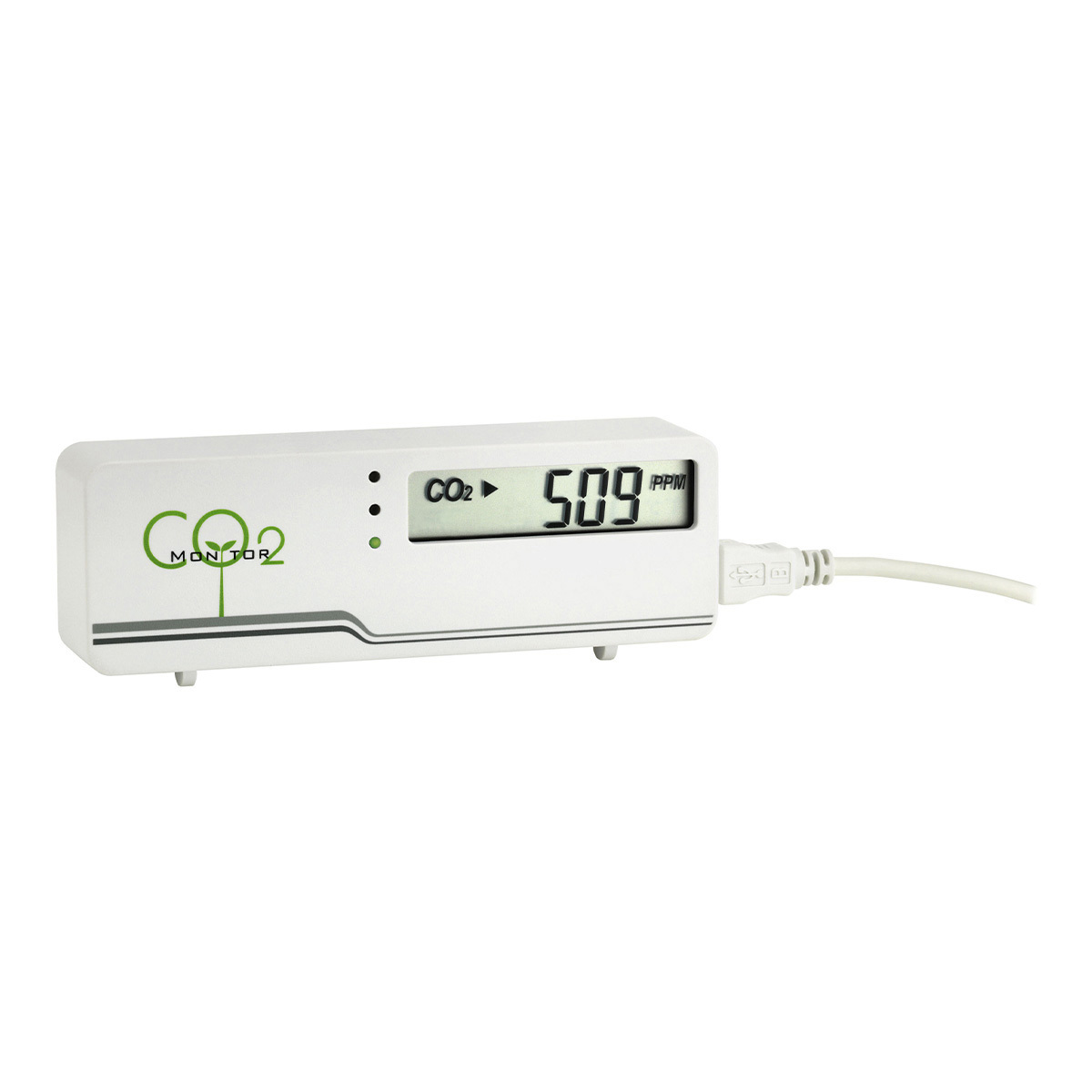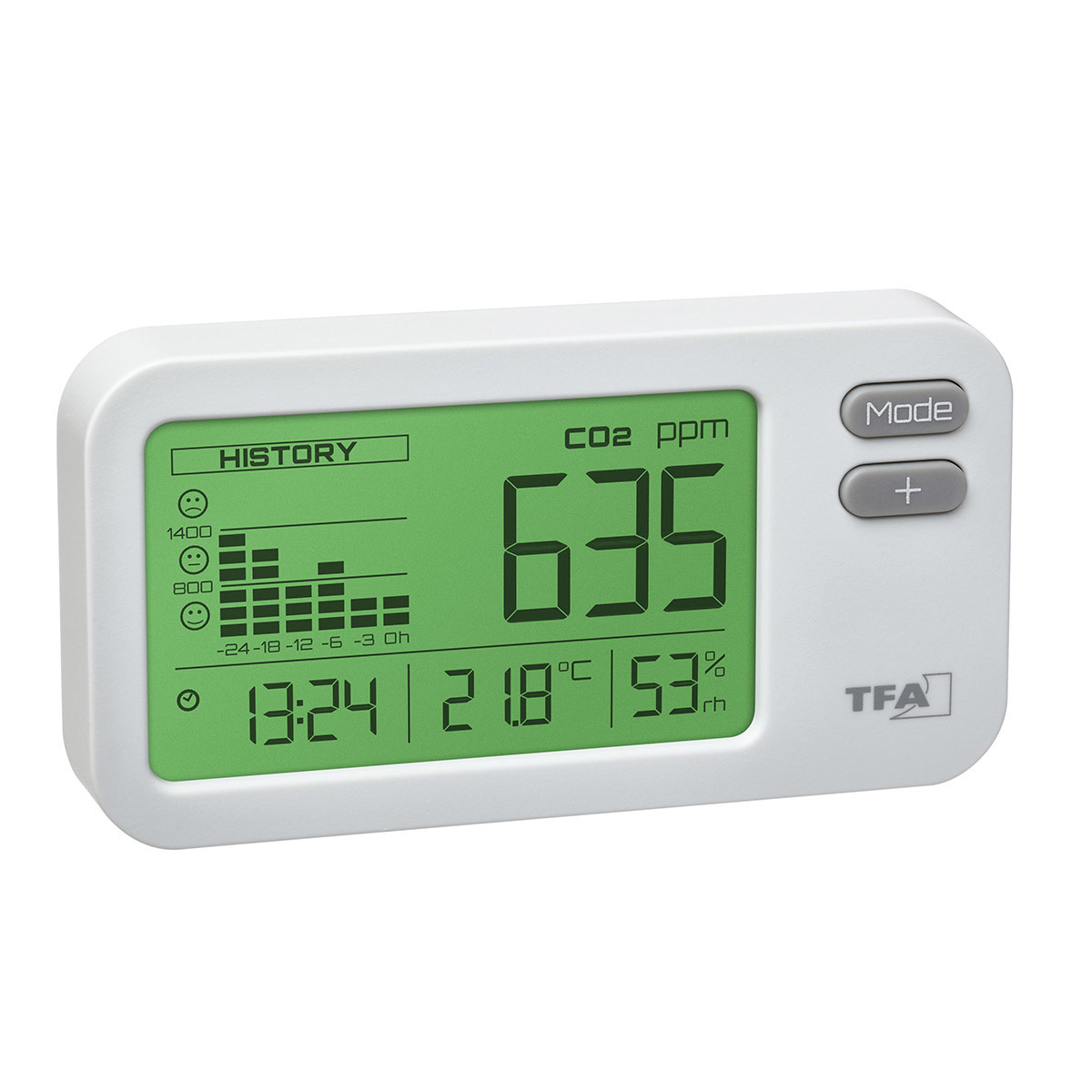Many people are currently infected with the coronavirus and the number of cases continues to increase. In addition to the current measures against the spread of the virus, higher temperatures and extra air humidification in rooms can reduce the risk of spreading COVID-19.
Inhaltsverzeichnis
Evidence suggests that the majority of coronavirus infections are transmitted via droplets. Infection can occur not only via direct transmission to the mucous membranes, but also through the air. This occurs via tiny exhaled water droplets that enter the respiratory tract. These so-called aerosols can float in the air for a long time and remain infectious.
According to researchers, viruses that are released into the air by infected people when they breathe and speak can reach greater distances than the 1 to 2 metres previously suggested.4 Whether and how long aerosols float in the air depends on other factors in addition to the size of the particles, including temperature and humidity.
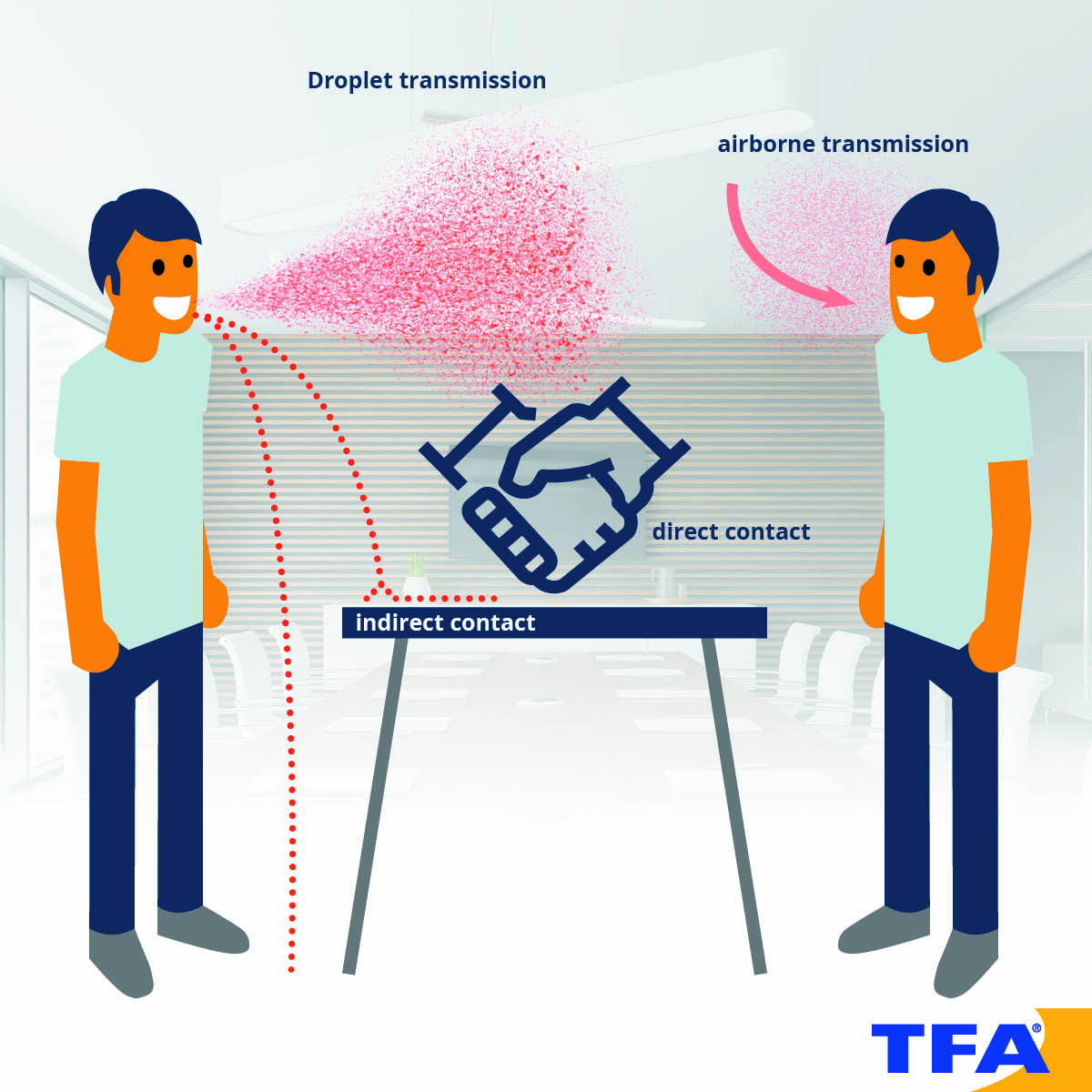
Coronavirus: Transmission via direct or indirect contact or via air
The risk of infection is greater indoors, specially in smaller rooms, as more infectious mist will be distributed in the air and be inhaled by other people present. The prevention of infection with COVID-19 can therefore be achieved by controlling the concentration and distribution of the virus particles.
Human respiration is the main source of indoor CO2. Each person exhales about 8 litres of air per minute. Exhaled air contains aerosols as well as CO2.
If a person is infected with the virus, these droplets can also contain virus particles. If a healthy person inhales these contaminated droplets and the number of particles contained therein exceeds a minimum infectious dose, the disease can be transmitted.5
Based on the correlation between CO2 and aerosol concentration in rooms, a risk assessment can be made: A measured CO2 concentration is used to infer a probable aerosol concentration and thus the probability of transmission. The following applies: The higher the CO2 value, the higher the probability of infection via aerosols.
Can high humidity slow the corona virus spread?
“The rate of transmission from human to human is influenced by indoor conditions,” explained Dr. Walter Hugentobler, FMH General Physician, and Dr. Stephanie Taylor, Harvard Medical School, Medical Advisors for Condair Group. The study results show that low humidity and very low temperatures enable the viruses to survive on surfaces and in the air for a long time. The virus survival was also long at medium temperatures of 20 to 30 °C, but only in connection with a low air humidity. Very high temperatures of more than 30 °C inactivate the corona viruses.1
A new statistical study from China also comes to the conclusion that higher temperatures and higher air humidity significantly restrict the spread of the corona virus.2
In a study with influenza viruses, it was also investigated how their infectiousness behaves in relation to air humidity. The researchers found that room humidity was the decisive factor in the transmission of pathogens.3 The risk of infection is greatest at low relative humidity. A relative room humidity of over 40% means an extremely unfavourable environment for these viruses and significantly reduces the risk of infection.
Reduce health risk by humidification and CO2 monitoring
The virus is transmitted from person to person mainly in buildings and in public transport. When the outside temperature is low, public transport and indoor spaces have their central heating on. The result is usually temperatures from 20 to 23 ° C in combination with a low humidity of less than 40%.
These temperature and humidity values are ideal climatic conditions for a long survival of corona viruses. In addition, the exhaled air of several people produce a high concentration of CO2 and aerosols. This increases the risk of transmission through contacts and droplet infections. Especially in offices with several employees, this means a higher risk of infection.
But what can be done to reduce the risk of infection via aerosols in addition to the usual measures such as protective masks and social distancing rules? We explain in 3 steps how you can reduce the health risk.
Step 1: Determine the temperature and humidity of the room air
You cannot influence the outside climate yourself. You can, however, ensure an optimal room climate: You can control the decisive factors, temperature and humidity, individually.
You can measure the temperature with a thermometer. The temperature range which is pleasant for humans is between 20 and 23 °C. A significantly higher room temperature will permanently stress the organism. It is therefore advisable to increase the humidity in order to reduce the risk of infection in buildings.
You will need a thermo-hygrometer to measure the temperature and the relative humidity simultaneously. Place the measuring device in the room. After a short time, the device gives you the corresponding percentages.
With TFA devices you are always on the safe side. Accurate sensors and tested quality provide you with reliable measured values.
All-in-one devices such as the weather stations measure the temperature, the air humidity, and many other measured values. These devices also support you in creating the optimal indoor climate.
Step 2: Measure the CO2 concentration indoors
The CO2 concentration in indoor spaces depends mainly on the following factors:
- Space volume,
- The number of people inside,
- The sort of activity taken by the individuals,
- The length of time people spent indoors,
- Combustion processes in the interior, e.g. fireplace
- Air exchange or fresh air volume flow.
You can measure the CO2 concentration of the indoor air with an automatic measuring device that takes a reading at a certain time interval (e.g. every 10 seconds). This also makes it possible to monitor the change in the CO2 concentration of indoor air over time. TFA has a selection of CO2 monitors for you to choose from:
Once you acquire a CO2 monitor, aim to measure the CO2 concentration continuously over a certain period of time, e.g. at home after returning from work and until bedtime, at work during office hours, at the gym during opening hours, at school during lesson time, etc. Start by ventilating the room for at least 15 minutes prior to initiating the measurement. This will give a starting point of approximately 400 ppm CO2 concentration, similar to the outside air. The CO2 monitor should be placed at a height of 1.5 m and at a distance of at least 1 -2 m from the walls to obtain an accurate measurement.
The following CO2 values apply to buildings where people are present, e.g. schools, offices, hospitals, restaurants and all types of public buildings:
- Optimum air quality: The CO2 concentration is below 800 ppm.
- Average air quality: The CO2 concentration is between 800 ppm and 1,200/1,400 ppm
- Poor air quality: The CO2 concentration is above 1,200/1,400 ppm.
The Federal Environment Agency of Germany recommends letting outside fresh air into the room if a value of 1000 ppm CO2 is exceeded.6 However, these figures refer to a “normal” environmental situation. During the pandemic, it is important to keep the CO2 concentration, and thus the aerosol density, as low as possible.7
Step 3: Control air humidity and CO2 concentration
To reduce the risk of virus transmission, it is important that you increase the relative humidity when the measured value is below 50%.
In addition, a more humid indoor air improves the respiratory defence function in healthy people. Try to achieve an optimum humidity and thus actively combat the spread of the virus in your rooms with simple methods. Depending on the temperature and humidity of the outside air, ventilation often causes the desired increase in humidity in rooms.
Even with too much CO2, a regular supply of fresh air is the simplest protective measure. In order to keep the risk of infection with coronaviruses as low as possible, it is important to ensure optimum humidity and CO2 concentration and to check the values regularly with suitable measuring instruments at home and in public buildings such as schools, day-care centres, hospitals, libraries as well as in leisure spaces, restaurants, and in offices and manufacturing and processing plants, to mention a few.
It is recommended to ventilate the office, event venues and seminar rooms every 20 minutes for at least 5-10 minutes during the pandemic. The hygiene guidelines of most federal states in Germany require school classrooms to be ventilated every 45 minutes. Please follow the tips on how to ventilate correctly.
Sources:
1 Hugentobler, W .: Optimal air humidity reduces the risk of corona spreading. Press release Condair Systems GmbH. 02.03.2020.
2 Wang, J. et al: High Temperature and High Humidity Reduce the Transmission of COVID-19. SSRN. 09.03.2020.
3 Noti, J. D. et al: High humidity leads to loss of infectious influenza virus from simulated coughs. PLOS ONE. 27.02.2013.
4Morawska, L. and Milton, D. K.: It is Time to Address Airborne Transmission of COVID-19. Clinical Infectious Diseases. 6 July 2020. DOI:10.1093/cid/ciaa939/5867798.
5 Morawska, L. and Cao, J.: Airborne transmission of SARS-CoV-2: The world should face the reality. Environment International. Volume 139, June 2020.
6Umweltbundesamt: Gesundheitliche Bewertung von Kohlendioxid in der Innenraumluft. Springer Medizin Verlag 2008.
7Berufsgenossenschaft Holz und Metall: Coronavirus – Zusatzinformationen zum Lüftungsverhalten für die „Coronavirus Handlungshilfe für lüftungstechnische Maßnahmen“ und „Coronavirus Handlungshilfe für Betriebe“. Stand: 10.07.2020.
